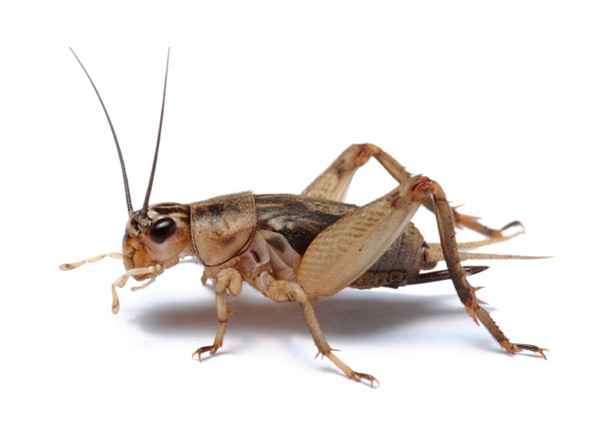Crickets 101

About Crickets
Sometimes associated with grasshoppers—both belonging to the order Orthoptera—crickets are shorter and stubbier than most grasshoppers and most are drab shades of straw color to brown to black, though tree crickets are actually green!
Crickets have been used for home security. When they chirp, all is well; when they stop, someone is approaching. But these characteristics can be frustrating when it’s 85 degrees out and chirping floods your house, only to go quiet when you try to find the source. Generally less than 1 inch long, the cricket can scurry underneath almost anything.
Although most do not settle or breed indoors, some species such as the house cricket and Indian house cricket will create populations of chirping pests within human residences. House crickets are found behind baseboards, near sources of heat like furnaces and water heaters, and in your kitchen. Their favorite meals are food scraps, pet food and other organic matter, but they may even chew on your drapes, furniture, and clothes. Given the chance, they can also wreak havoc in your pantry or garden. And because crickets are nocturnal, their “jam sessions” will begin right around the time you’re getting ready for bed.
Preventing Crickets
Luckily, preventive measures should keep crickets at bay. Caulk possible entry points like cracks in the walls or foundation of your house. Seal other openings, too, such as ground-level windows and the spaces under doors. Clear out weeds and tall grass around your house, store firewood, bricks, and organic debris away from the home, keep garbage cans covered and raise them on wooden blocks. Also make sure to reduce clutter inside your home so as not to encourage hiding places.
These precautions should make your home less attractive to crickets. But when you have crickets already—perhaps a lot of crickets—you can take additional steps to ensure their speedy departure.
Eliminating Crickets
Where should you start? Bio Spot Active Care™ Flea & Tick Home Spray can be used along windowsills, in corners, garages, and basements, and other labeled sites where you have noticed crickets. Spray crickets directly if possible. Bio Spot Active Care™ Flea & Tick Carpet Spray can add a layer of cricket protection on carpeted areas by driving the crickets out of their hiding places and then spray cricket directly. If your infestation is particularly heavy, the Bio Spot Active Care™ Indoor Fogger can help to clear out your entire house. (Of course, these products will also protect against many other pests mentioned on their labels too.)
Bio Spot Active Care™ Yard & Garden Spray can be used around the outside of your house to help keep crickets away from your grass, bushes, and lawn and backyard areas. This helps to ensure that once crickets have left, they won’t get close enough to your house to return.